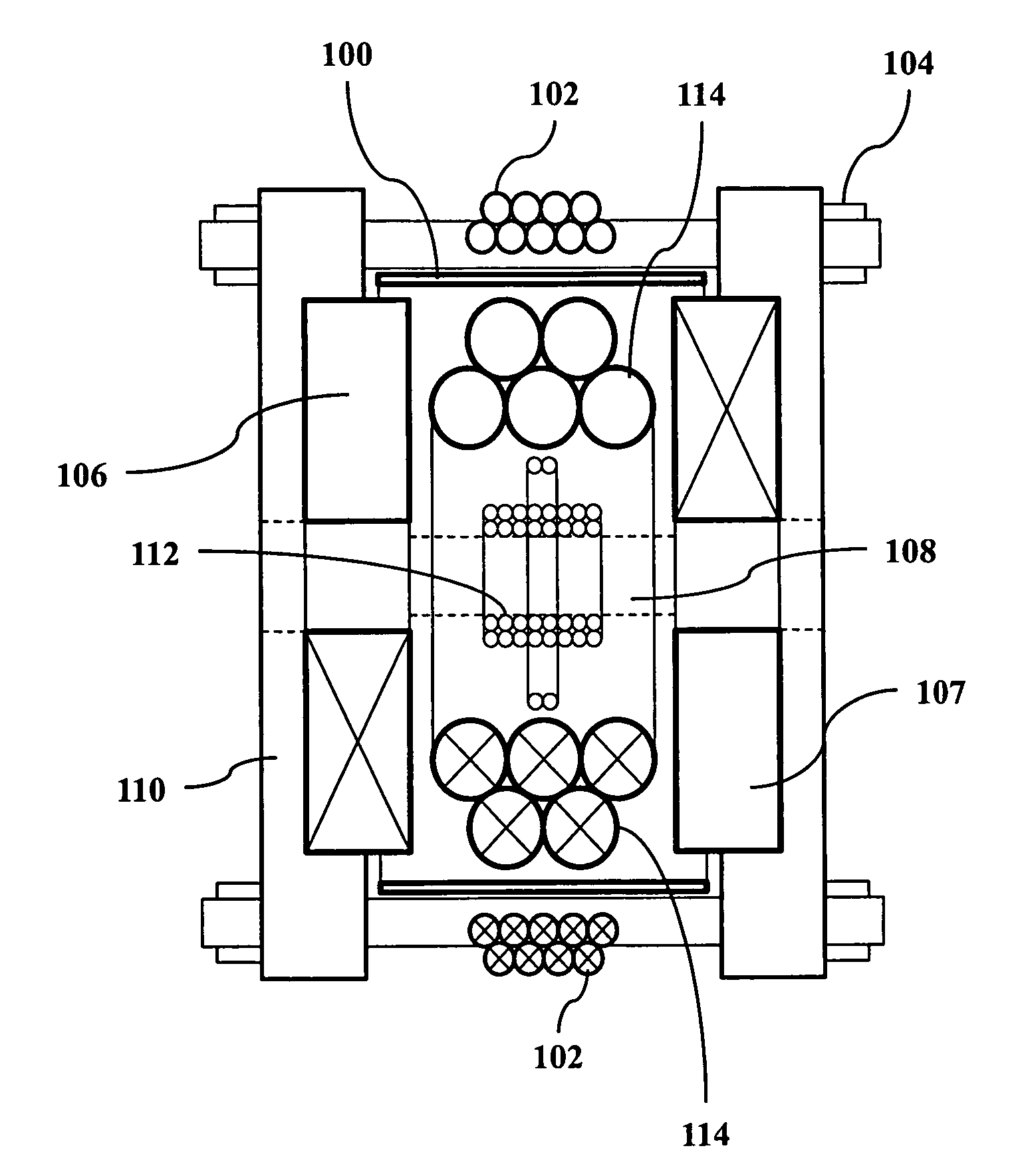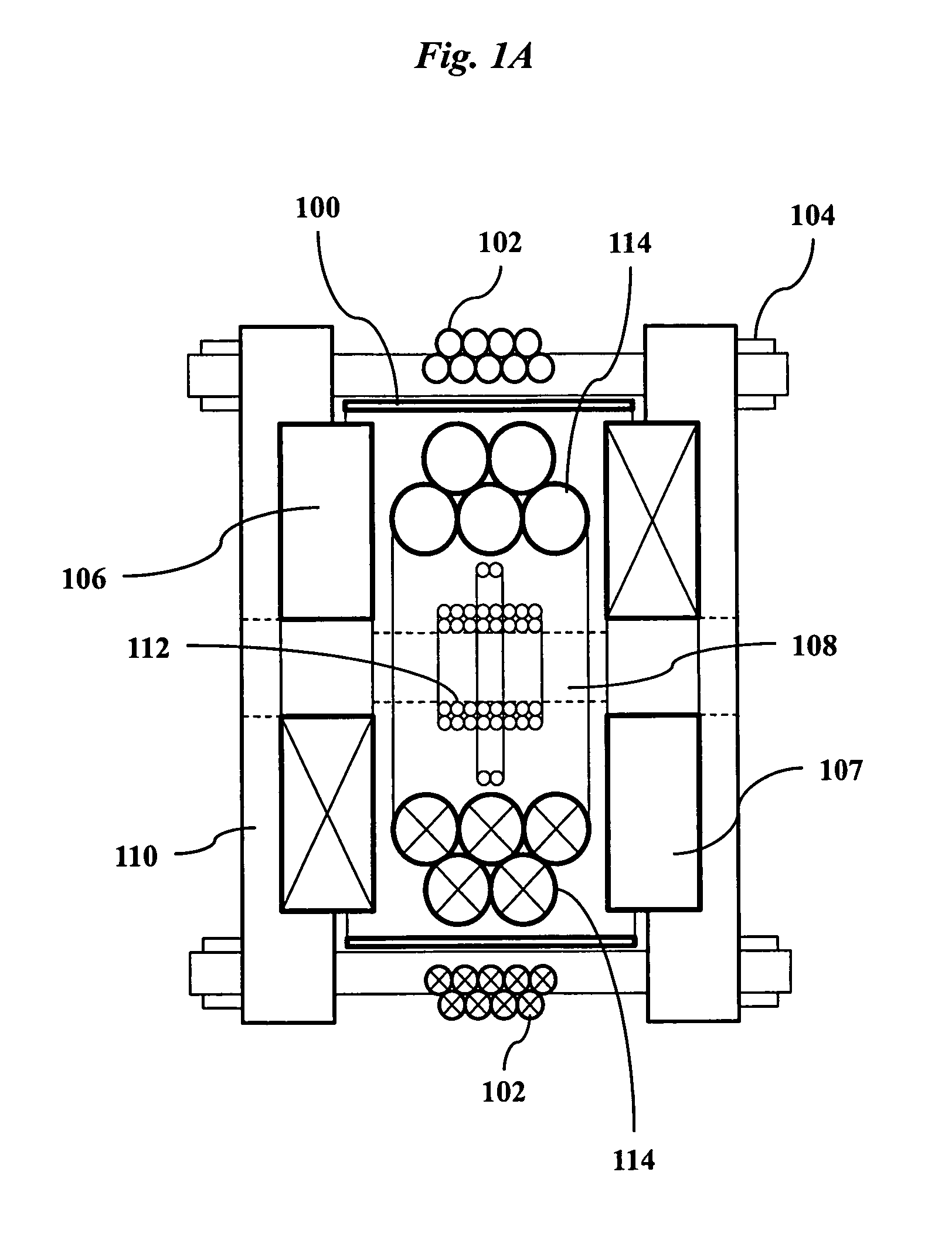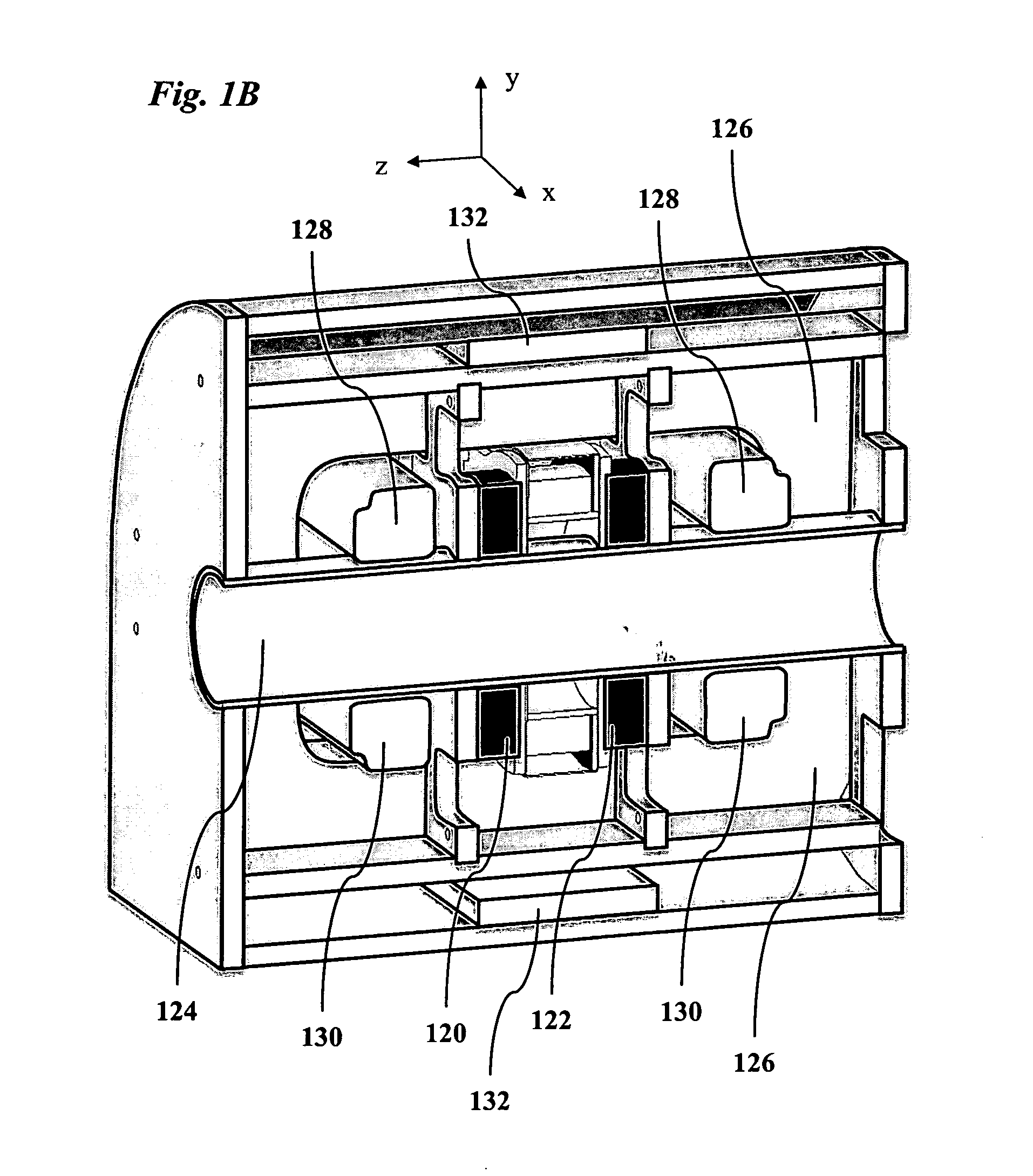Improved techniques for magnetic particle imaging
a magnetic particle and imaging technology, applied in the field of volume imaging, can solve the problems of untuned receiver coil, unoptimized preamplifier matching, unsatisfactory reconstructed image from n harmonic images, etc., and achieve the effect of efficient performan
- Summary
- Abstract
- Description
- Claims
- Application Information
AI Technical Summary
Benefits of technology
Problems solved by technology
Method used
Image
Examples
Embodiment Construction
[0039]An MPI apparatus according to an embodiment of the invention is shown in FIG. 1A. NdFeB ring magnets 106, 107 create a static inhomogeneous magnetic gradient field having a field-free region located near the center of imaging bore 108. Ring magnets 106, 107 have a mean diameter of 7.62 cm and a center-to-center separation of 6.85 cm. The magnetic field is approximately linear axially down the bore, with a gradient of dB / dz=4.5 T / m. Coronal gradients are dB / dx=dB / dy=2.6 T / m. Water-cooled excitation solenoid 114 generates a dynamic magnetic field that is superimposed on the static field and can excite magnetic particles in the imaging bore 108. In addition, intermodulation solenoid 102 generates a dynamic magnetic field that is also superimposed on the static field. Magnetic shield 100 passively isolates the AC excitation solenoids 102 and 114 from interaction with other components to reduce unwanted heating and signal interference. Signals from magnetic particles located in the...
PUM
 Login to View More
Login to View More Abstract
Description
Claims
Application Information
 Login to View More
Login to View More - R&D
- Intellectual Property
- Life Sciences
- Materials
- Tech Scout
- Unparalleled Data Quality
- Higher Quality Content
- 60% Fewer Hallucinations
Browse by: Latest US Patents, China's latest patents, Technical Efficacy Thesaurus, Application Domain, Technology Topic, Popular Technical Reports.
© 2025 PatSnap. All rights reserved.Legal|Privacy policy|Modern Slavery Act Transparency Statement|Sitemap|About US| Contact US: help@patsnap.com



